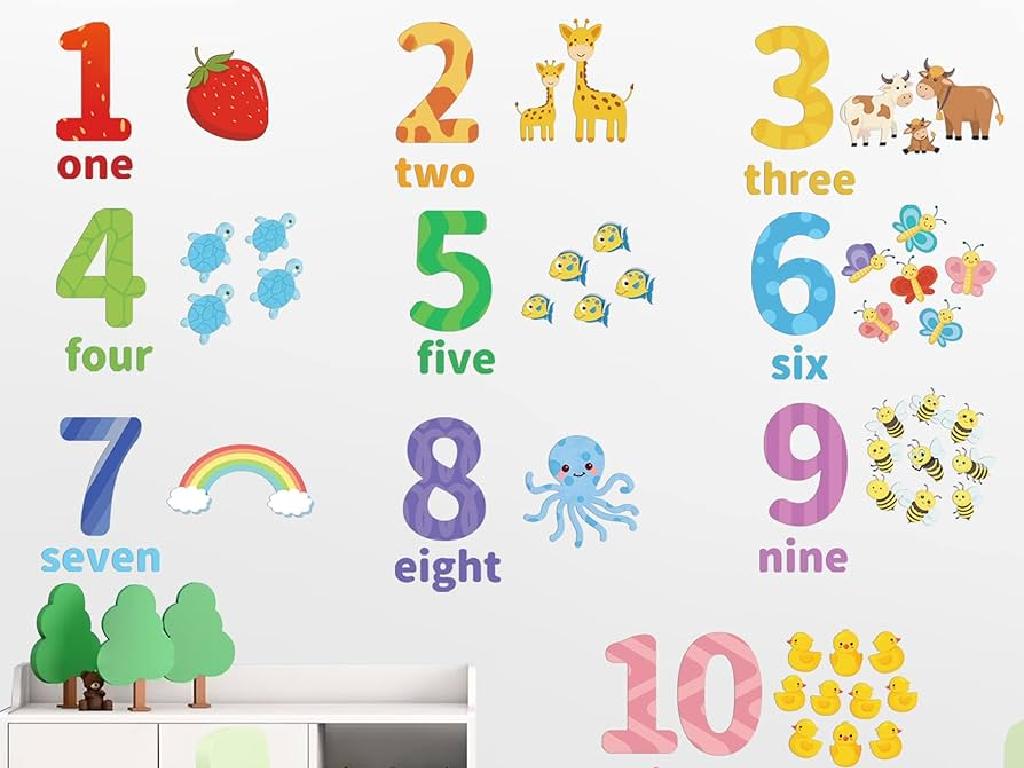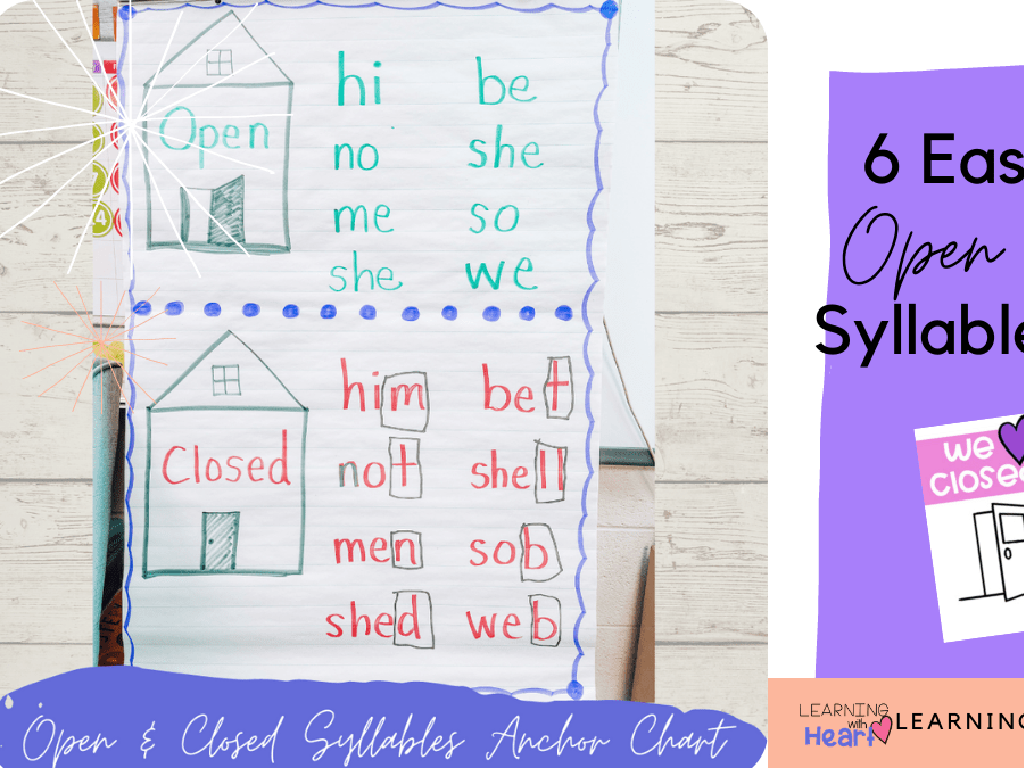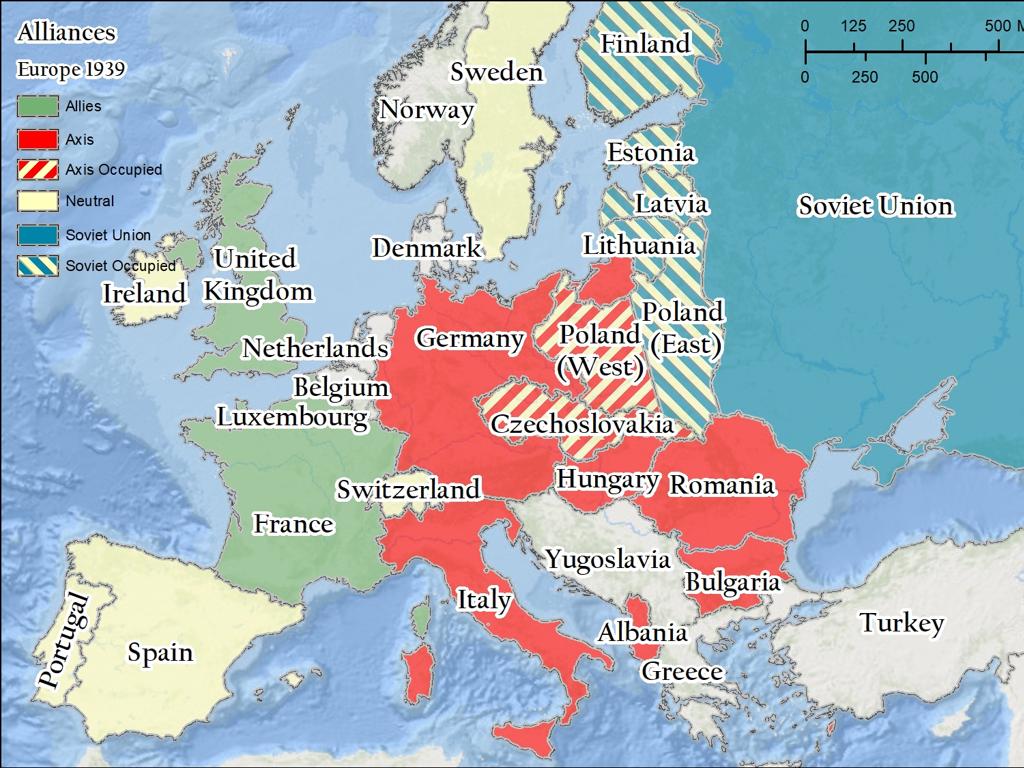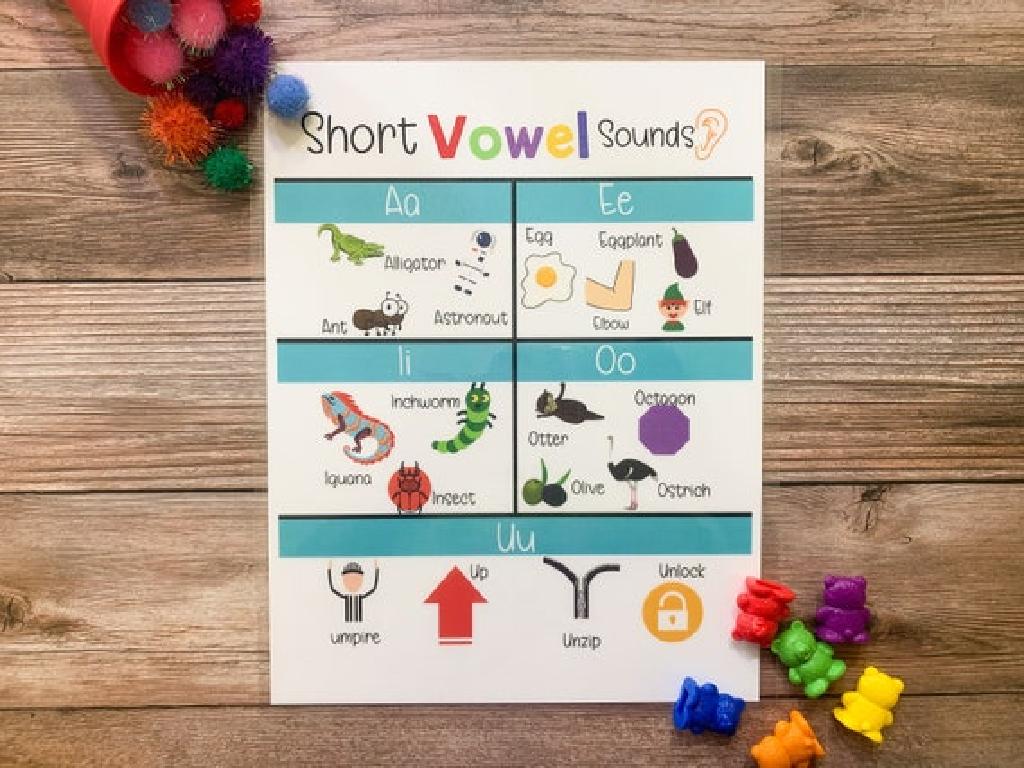Ways To Make A Number Using Addition And Subtraction - Up To 100
Subject: Math
Grade: Second grade
Topic: Mixed Operations: Two Digits
Please LOG IN to download the presentation. Access is available to registered users only.
View More Content
Today’s Adventure: Mixing Numbers!
– Explore addition and subtraction
– Learn how numbers combine
– Numbers can be added or subtracted to get the same result, like 50 + 30 and 90 – 10 both make 80.
– Discover multiple solutions
– One number can be made in various ways, e.g., 60 can be 30 + 30, 70 – 10, or 50 + 10.
– Practice with examples up to 100
– Let’s try making 40, 70, and 90 using different addition and subtraction combinations!
|
This slide introduces second graders to the concept of mixed operations with a focus on addition and subtraction within 100. Begin by explaining that numbers can be combined in different ways to make the same number. Emphasize that there is not just one correct answer when creating a number. Provide examples of how to make a specific number using different combinations of addition and subtraction, and encourage students to think of their own combinations. Use hands-on activities or visual aids to help students understand the concept. For example, use blocks or counters to represent numbers and show how they can be added or taken away to reach a target number. This will help students grasp the flexibility of number operations and enhance their problem-solving skills.
Exploring Addition: Ways to Make Numbers
– Understanding addition
– Addition means combining numbers together
– Adding with examples
– For instance, 5 apples + 3 apples equals how many apples?
– Counting to find sum
– We can count all the apples together to find the total
– Practice with class activity
|
This slide introduces the concept of addition as a way of combining two or more numbers to make a new number. Use relatable examples like combining apples to illustrate the concept. Engage the class by counting together to find the sum of the example provided. Encourage students to visualize the process by imagining the apples being put together. After explaining, conduct a class activity where students can practice addition with different pairs of numbers up to 100. Provide guidance and support as they work through the problems, ensuring they understand the process of adding and finding the sum.
Exploring Subtraction: Taking Away Numbers
– Subtraction means taking away
– Example with balloons
– If you have 8 balloons and lose 3, how many are left?
– Counting by taking away
– Just like counting, but we go backwards!
– Subtraction within 100
– Practice with numbers from 1 to 100
|
This slide introduces the concept of subtraction as a means of taking away from a total amount. Use the example of balloons to make the concept relatable and easy to visualize for second graders. Explain that subtraction is similar to counting, except we count backwards, reducing the number each time. Encourage students to think of subtraction as ‘taking away’ and ‘how many are left’. Provide practice problems where students can apply subtraction to numbers up to 100, reinforcing the concept with hands-on activities like using physical counters or drawing pictures to represent the problems.
Making Numbers with Addition
– Explore ways to make 10
– Examples: 5+5, 6+4, 7+3
– Practice: Making 20 together
– Let’s try: 10+10, 15+5, 12+8
– Multiple solutions exist
– Addition is fun and creative
|
This slide is aimed at helping second-grade students understand that there are multiple ways to reach a number using addition. Start by discussing the different combinations that make 10, using simple pairs they are familiar with. Then, move on to a class activity where students will work together to find different pairs that add up to 20. Emphasize that there are many correct answers, which helps to show the flexibility and creativity in math. Encourage students to come up with their own combinations and share with the class. This activity not only reinforces their addition skills but also promotes critical thinking as they discover various possibilities.
Making Numbers with Subtraction
– Start with the number 20
– Subtract 5 from 20
– What number do we get if we take 5 away from 20?
– Explore making 15 with subtraction
– Can we reach 15 starting from a different number?
– Try with various starting numbers
– Practice with numbers like 25, 30, or 35 and subtract different amounts
|
This slide is aimed at helping second-grade students understand the concept of subtraction as a means to make different numbers. Begin by illustrating how subtracting 5 from 20 results in 15. Encourage students to think of subtraction as ‘taking away’ and to visualize the process. Then, challenge them to find alternative ways to arrive at the number 15 by starting with different numbers and subtracting various amounts. This exercise will reinforce their understanding of subtraction and number relationships. Provide guidance on how to set up subtraction problems and ensure they understand that subtraction can be used to find the difference between numbers. During the class, facilitate activities where students can practice this concept with different starting points and discuss their findings.
Mixing It Up with Addition and Subtraction
– Making 50 with addition & subtraction
– Example: 30 + 40 – 20 = ?
– Start with 30, add 40, and then subtract 20
– Solve it together in class
– Use counters or draw pictures to help find the answer
– Check our answers as a team
– We’ll review the solution step by step
|
This slide is aimed at helping second-grade students understand how to make a number using both addition and subtraction. The example provided uses simple two-digit numbers to demonstrate how 50 can be made by adding 30 and 40, then subtracting 20. Encourage students to visualize the problem with physical counters or by drawing pictures to aid their understanding. During the class, solve the problem step by step with the students, and then check the answers collectively to ensure everyone understands the process. Provide additional similar examples for practice and reinforce the concept that numbers can be composed in multiple ways using addition and subtraction.
Class Activity: Number Chef
– Become a Number Chef in our Math Kitchen
– Your recipe: Make a number up to 100
– Use addition or subtraction to cook up a number
– Share your recipe with the class
– Explain the steps you took
– Describe each ingredient (number) and process (operation)
|
In this engaging class activity, students will apply their knowledge of addition and subtraction to ‘cook up’ a number up to 100. Each student will act as a Number Chef and think creatively to combine ingredients (numbers) using the processes (operations) of addition and subtraction to create a unique number ‘dish’. After crafting their number recipe, students will present their method to the class, explaining the steps they took to reach the final number. This activity not only reinforces arithmetic skills but also encourages public speaking and logical reasoning. Possible variations for different students could include using only addition, only subtraction, or a mix of both; creating the smallest or largest number possible; or using a set number of ‘ingredients’. The teacher should circulate to provide guidance and ensure each student understands the operations involved.
Number Chefs: Cooking Up Numbers!
– Congrats on becoming Number Chefs!
– Homework: Create 5 new numbers
– Combine numbers up to 100 in your own way
– Use addition and subtraction
– Mix numbers like ingredients to make new ones
– Share your number recipes tomorrow
|
Well done to all the students for their hard work today! As homework, they are tasked to practice their new skills by creating five unique numbers using addition and subtraction, with the total sum not exceeding 100. This activity will reinforce their understanding of mixed operations and encourage creativity. Remind them to write down their ‘recipes’ or the steps they took to create their numbers. In the next class, students will have the opportunity to share their results and explain their thought process, fostering a collaborative learning environment. Provide examples if necessary, such as 45 + 30 – 10 = 65 or 80 – 15 + 5 = 70, to guide them.






